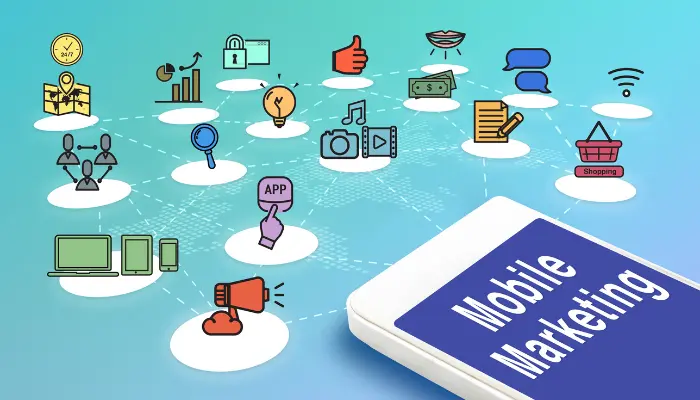
Imagine walking through a bustling city street, every face illuminated by the glow of a smartphone screen. This scene, replicated across the globe, is a testament to a profound shift in consumer behavior – the rise of the mobile-first world. In this digital age, marketing strategies are evolving, dancing to the rhythm of smartphone taps and swipes. In today’s fast-paced digital landscape, mobile devices have become central to our daily lives, profoundly influencing how consumers interact with brands. Mobile-first marketing is not just a buzzword; it’s an essential strategy for businesses aiming to stay relevant and connected with their audience. This blog post delves into the importance of adapting to mobile-first consumer behaviors, supported by statistics, insights, and data.
The shift to mobile has been rapid and transformational. According to Statista, as of 2023, there are over 6.3 billion smartphone users globally. This staggering number highlights the ubiquitous nature of mobile devices. Furthermore, a report by eMarketer suggests that adults in the U.S. spend an average of 3 hours and 43 minutes on mobile devices daily, surpassing TV for the first time.
Also Read: The Future of Podcast Advertising in 2024
Mobile-first consumer behaviour is characterized by the constant connectivity and accessibility provided by smartphones. This behaviour impacts how consumers:
1. Optimize for Mobile The cornerstone of mobile-first marketing is ensuring all digital assets are optimized for mobile. This includes responsive website design, fast loading times (Google reports that 53% of mobile site visits are abandoned if pages take longer than 3 seconds to load), and mobile-friendly content formats.
2. Leverage Location-Based Marketing Mobile devices offer unique opportunities for location-based marketing. Businesses can use geofencing and location data to send targeted advertisements to consumers when they are in proximity to a store or specific area.
3. Personalize the User Experience Personalization is key in mobile marketing. Utilizing data analytics to understand user preferences and behaviors can lead to more personalized and relevant marketing messages. Salesforce research indicates that 84% of customers say being treated like a person, not a number, is very important to winning their business.
4. Incorporate Social Media Marketing Integrating social media into your mobile marketing strategy is essential. Platforms like Instagram, Snapchat, and TikTok, which are predominantly used on mobile devices, offer various advertising options that can be tailored to mobile users.
5. Utilize Mobile Apps Developing a mobile app can provide a direct marketing channel to mobile users. Apps can offer unique functionalities and experiences, fostering stronger brand loyalty. A report by App Annie reveals that users spend 7 times longer on mobile apps than on mobile websites.
6. Focus on Video Content Video content is highly effective on mobile. A study by HubSpot states that video is the most preferred form of content, with 54% of consumers wanting to see more video content from brands they support.
7. Implement Mobile Payments Ease of transaction is crucial for mobile-first consumers. Integrating mobile payment options can enhance the user experience. A survey by PwC shows that 34% of consumers make weekly payments using their mobile devices.
While mobile-first marketing presents numerous opportunities, it also comes with challenges, such as maintaining privacy and data security, addressing screen size limitations, and creating effective content across different mobile platforms.
As technology continues to evolve, so will mobile-first marketing strategies. Emerging technologies like AR (Augmented Reality) and VR (Virtual Reality), voice search, and AI (Artificial Intelligence) are set to redefine the mobile experience, offering new avenues for engaging with consumers.
Conclusion: Embracing the Mobile-First World In conclusion, mobile-first marketing is not just about adapting to current trends; it’s about anticipating the future of consumer behavior. Businesses that embrace and innovate in this mobile-first world will find themselves at the forefront of digital marketing, forging deeper connections with their audiences.






DigiDir Digital Solutions Private Limited | All Rights Reserved 2018- 2024
Digital Marketing Agency/ Company in Noida, Delhi NCR, India